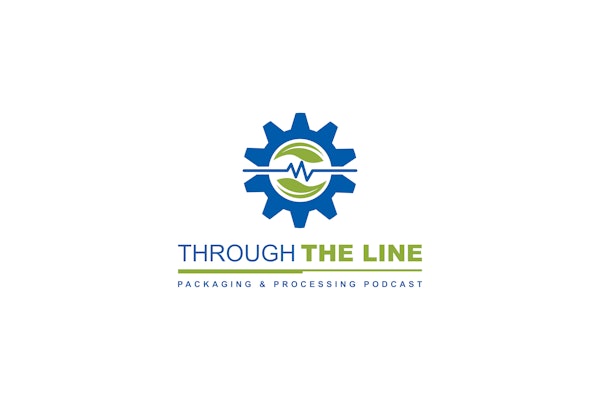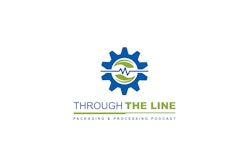Sustainable Packaging Symposiumwww.sustainablepackagingsymposium.comPE International, Incwww.fivewinds.comSo, we all know that impact performance data is important to our sustainable packaging objectives, but how do you make sense of the various metrics, claims, and material choices? The key to truly “more sustainable” packaging design is to begin with a strategy. With a vision, goals, and a clear connection to the business in hand, you can successfully apply tools like LCA to make better decisions about design and purchasing.
First, a review of the basics of LCA. Though LCA is relatively new to most companies in North America, the standards for LCA were developed in the early 1990s. The intent of the original developers (one of whom is the senior author of this article) was to formalize the way organizations assessed the impacts of their products. The standard was immortalized as ISO 14040/44 as the constitution of conducting and communicating LCAs. Today, LCA software and data continue to improve, further enabling effective implementation of the standard. So how do the software and data fit into your business?
The standard is powerful, but it doesn’t mean anything unless you know what to do with it. This article outlines the core elements to developing a strategy.
What’s the vision?
Whether you’re a buyer or a producer of packaging, making decisions about more sustainable packaging starts with the same question: What are you trying to achieve? Claims or improvements are nearly impossible to evaluate if you don’t know what’s important to your business. You probably have a good sense of the trade-offs between cost, performance, quality, and other traditional attributes, but every company weighs these differently when making a purchasing or manufacturing decision. Some companies are focused on premium products, while others are more cost-conscious.
The same value judgment must be made regarding sustainability issues. There is no scientifically “most important” issue that applies to all products. How you make decisions must be informed by what issues are important to your customers, to your internal decision-makers, and of course to the issues actually relevant to your product. For example, a focus on water for a product that uses very little is what is called the Sin of the Lesser of Two Evils, according to “The Seven Sins of Greenwashing,” a list established by environmental marketing and consulting firm TerraChoice (www.sinsofgreenwashing.org). The Sin of the Lesser Two Evils refers to “a claim that may be true within the product category, but that risks distracting the consumer from the greater environmental impacts of the category as a whole. Organic cigarettes could be an example of this sin, as might the fuel-efficient sport-utility vehicle,” relates TerraChoice.
Therefore, begin your strategy by identifying these issues. Ask your customers and leadership what’s important: Carbon? Nonrenewable resource conservation? Water? Other? Then determine the key impacts of your package. Weigh these respective issues against your business strategy. You might choose to emphasize your improvement efforts, or at least your communications on the issues your customers are most asking about. Because your customer’s priorities won’t always match up with the priorities identified from a scientific evaluation, be mindful about how you balance this trade-off; you will likely benefit in the long term by having fully walked the talk, even if it’s behind the scenes (i.e., not market facing). Sustainability indicators should be an “and” in conjunction with price, performance, and quality criteria, not an “or.”
It’s also critical to consider the bigger picture of packaging. In other words, consider as you develop your strategy not just the type of material or whether it’s recyclable, but the entire system. Ask yourself the following:
• What unintended impacts may occur by focusing on one impact or life-cycle stage? You want to avoid inadvertently shifting a burden that at best results in neutralizing your improvement, but at worst actually increases the impact.
• What is the relative contribution of the packaging to the overall product system’s footprint? If you’re the producer of the final product, your long-term strategy should include the complete picture, not just packaging.
• What is the optimal design or material based on the particular function you seek to deliver? For example, more durable (yet disposable) packaging that prevents breakage might be preferred to a material or design that has a lower inherent “footprint” yet increases the likelihood that the product will break and require the whole thing to be landfilled.
Set goals
If you’re a packaging producer, the next step after determining this set of priorities is to determine what you’re going to do about it. What’s your plan? Will you aim to achieve regular reductions on key indicators over time, such as an annual 7% reduction? Or is your company the type to set big, audacious goals for the long term and challenge your people to meet them, like producing zero waste by 2020? There’s no right way to set goals—again, it depends on who you are and what kind of sustainability journey you’re on. Connect the goals to your company’s existing strategic planning process, based on the business benefits (reduced cost, improved efficiency, increased revenue) you expect to achieve through the initiatives you establish.
Execute
Once you know what’s important to you (key indicators like waste, carbon, water) and what you’re trying to achieve (e.g., annual reduction or ambitious goals), you can then determine how you’re going to accomplish what you’ve set out to do. There are many tools on the market to help you evaluate your designs and understand how they stack up against your goals; there is one out there that is right for you based on the strategy you have taken the time to develop. For example, if the metric is related to reducing waste across the life cycle of your package, then LCA would be an appropriate tool. If your metric is the use of certified sustainable forestry, then an alternative approach is warranted. And there are further spectrums of tools, even within that segmentation of tools, depending on your goals and objectives.
But don’t forget about the process. “A fool with a tool is still a fool.” Your team must understand not just the technical prowess of your tool, but also what they are supposed to do with the output, how that should integrate into their decision-making process, and how they will be held accountable to doing things differently. It’s too easy to dismiss good information on possible improvements because “it probably costs too much,” or “I don’t have enough time/resources.” Teams must have performance objectives related to achieving your sustainability goals (whether that’s reviewing contracts from suppliers or creating new designs), or it will never be more than a “nice to have.” Rigor around this process also builds the internal capacity and knowledge that allows leadership in design that minimizes meaningless/greenwashing claims.
Go to market
Speaking of greenwashing, are you making (or reviewing) a comparative claim? Sustainability continues to grow in importance and as a result, so are all of the attempts to differentiate in the market or meet market requirements. There is a lot of confusion about what makes a good claim. If you’re not an LCA expert, how do you cope?
First, be cautious with “comparative” claims. Saying you are demonstrably better than a competitor is very difficult to substantiate; it depends on too many factors. In general, there are no absolutes, in terms of the most sustainable material, source location, or just about any other demographic of your supply chain. A highly efficient producer of a more intensive material might have a lower overall burden than an inefficient provider of a low-burden material. Also, if an LCA is used to support “comparative” claims, it should be recognized that not all impacts can be assessed though an LCA study. For example, for determining any biodiversity or land-use impacts, approaches outside of LCA are preferred
When they are made, comparative claims must be reviewed by a third-party review panel to ensure they are credible. Make sure to ask the right questions about whether this panel has been conducted before accepting/making a comparative claim.
Know what is meaningful (and legal) to say without comparative claims. There is an increasing amount of guidance on this topic that all says the same thing: Be truthful and not misleading, hit the relevant issues for the product, and talk about metrics.
As part of the evolution of LCA and marketing claims, we are also seeing the development of Environmental Product Declaration (EPD) programs in North America, the sister of which has been in place in Europe for several years. EPDs provide the mechanism to use LCA outcomes as marketing collateral, and are also standardized (ISO 14025). The critical component of the EPD process is that any product seeking to communicate based on LCA must follow a set of guidelines that would be common to all products in that category. These are called Product Category Rules.
But this article isn’t about EPDs in particular. This article is about how we make better decisions that achieve business value with our sustainable packaging initiatives, and what role LCAs and data can play in that decision.
The bottom line is, we make this more difficult than it needs to be. There is clear guidance out there in the form of the ISO standard for LCA and EPDs. Do what makes sense with your strategic objectives as a company. Be informed about what you can and can’t say, and have a dialogue about the issues in your respective industries/customer relationships.


























